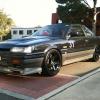R200 Questions.... Yay...
Announcements
-
Similar Content
-
Latest Posts
-
Wouldn't get that in a BMW. 🤣 Sucks that this happened so early in the day but good to hear the suspension feels better. What kind of diff options are available?
-
By Watermouse · Posted
Man your a bitch sometimes, Imwas just trying to help -
For something that never existed in the first place? No R33 GTST was ever sold brand new in the US, therefore no such window sticker ever existed. So , you can print out a blank page and glue that on and it will still be less accurate than just looking through the glass and seeing nothing.
-
By Watermouse · Posted
I got a full sheet set of OEM copied stickers to replace all the faded engine bay ones, great quality too. Came from England. Someone like that should be able to to make u up what u want so long as u have a quality image to show them 🤷🏻♂️
-




Recommended Posts
Create an account or sign in to comment
You need to be a member in order to leave a comment
Create an account
Sign up for a new account in our community. It's easy!
Register a new accountSign in
Already have an account? Sign in here.
Sign In Now